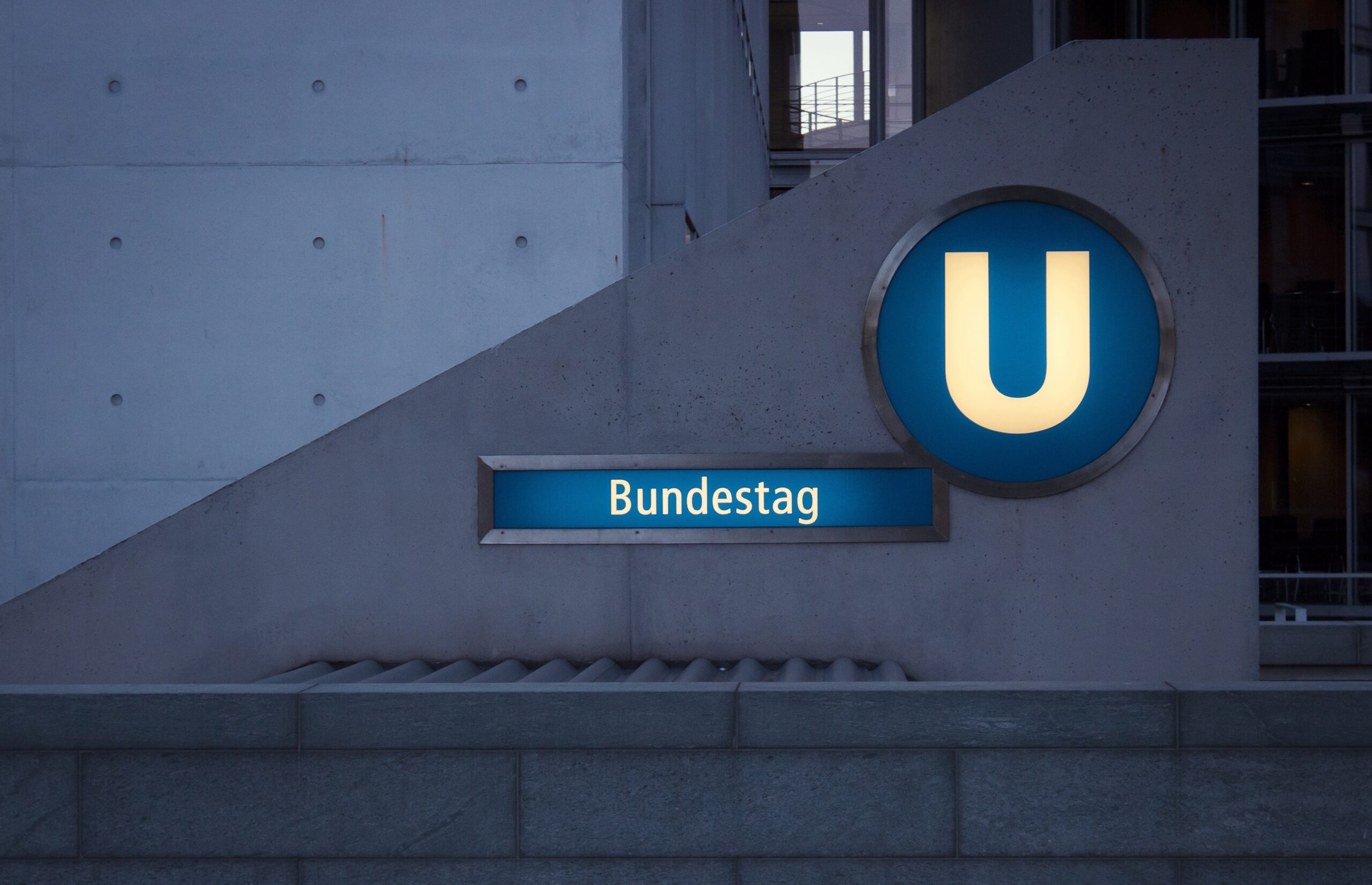Partager Twitter Facebook Email Copy URL
With elections around the corner, what are Germany’s political parties saying about climate change? – en anglais !

Lytton, a small town to the north-east of Vancouver, reported temperatures up to 49.6 degrees Celsius on 29 June—record-breaking heat for that latitude. Only a day later, the community no longer existed. It had burned like tinder, consumed by a drought-intensified forest fire.
Last year, nearly 31 million people were displaced on account of natural disasters, mostly within their own countries. They fled Cyclone Amphan in Asia or were the victims of hurricanes in Central America and the Caribbean. Floods forced millions to leave their homes in Africa and the Middle East. Many of the casualties connected to natural disasters in the Global South have not been counted. The mid-July floods show that climate change has long since arrived in Germany as well. The last three summers of drought dried out the soil down to its deeper layers; this year the water came. The immense rainfall claimed the lives of over 150 people.
There is no question that climate change will be the central issue of this federal election campaign. Not just because it is becoming more visible and tangible. The implementation of the Paris Climate Agreement is currently making its way, albeit slowly, through the politics in Brussels and Berlin. The proposals for 17 new EU regulations and directives have just been published as part of the EU Commission’s Fit for 55 package. The new EU climate target of reducing greenhouse gas emissions by 55 percent from 1990 levels by 2030—decided on politically months ago—is forcing the member states to significantly adjust their national targets.
German targets are still far from being a just climate contribution that would keep global warming within a halfway tolerable range.
The German government hesitated as long as it could. It was not until climate activists successfully appealed to the Federal Constitutional Court that the CDU/CSU and SPD were forced to amend the Climate Protection Act before the parliamentary summer recess. The most important changes are a 65 percent (instead of 55 percent) cut to greenhouse gas emissions from 1990 levels by 2030, climate neutrality by 2045, and an annual reduction plan for post-2030.
Even these targets are still far from being a just climate contribution that would keep global warming within a halfway tolerable range. But achieving even these inadequate targets will present an enormous challenge for next German government. A truly just climate policy would have to shape the undeniably necessary structural changes to energy supply and industry, to construction, transport, and agricultural production in an environmentally and socially sound way. Such a policy would have to aim at improving quality of life for everyone, both in Germany as well as in countries that export to Germany.
The Changes We Need
However, the scope of the necessary structural changes is just as vast as the danger that employees, tenants or entire regions will lose out in the process—at least if the potential for such disruptions is not actively tackled. Against the backdrop of an already deeply divided society and a profit-oriented economy, this will be difficult, to put it mildly.
Moreover, the prescribed cuts in greenhouse gas emissions are so high across all sectors, that the capitalist growth model as a whole is likely to come to the brink. These cuts, and hence Germany’s annually decreasing greenhouse gas budget, are now for the first time legally anchored in the KSG annual targets to 2040. This applies to every sector except the energy sector, which in turn is subject to the EU Emissions Trading System. If this mandatory reduction plan is actually followed, explosive new conflicts over the remaining resources and land can be expected—and of course over distributive justice.
The visibly overburdened federal government has taken few steps to transform the new climate targets into concrete implementation plans prior to the federal election.
Against this backdrop, it is hardly surprising that the visibly overburdened federal government has taken so few steps to transform the new climate targets into concrete implementation plans prior to the federal election. Those who have been applying the brakes ´for years do not want to risk getting their fingers burnt before 26 September. This strategy of stalling and evasion has largely proved to be a failure already—judging, for example, by the public outrage at the range of excuses offered by Laschet and his cronies, from helpless to brazen, in interviews about the July floods. However, real clarity can only be expected to come in the autumn. Party election programmes can already provide clues as to what direction things are headed in.
Below is a non-exhaustive list of key areas.
Climate Neutrality
According to the election programmes of the Christian Democrats (CDU/CSU) and the Social Democrats (SPD), Germany should be completely climate-neutral by 2045—as is now stipulated in the KSG. The Free Democrats (FDP) are aiming for 2050, or earlier if things go well. The Alternative für Deutschland (AfD) continues to act as the reactionary party of climate change denial. Meanwhile, with the formulation “climate neutral in less than 30 years”, the Greens have not concretely committed to anything, whereas by giving a deadline of 2035, Die Linke is carrying the demands of the Fridays for Future demonstrations into the federal election campaign.
Coal Phase-Out
The impact assessments of the new EU climate targets imply that the coal-powered era will come to an end in the EU as early as 2030, simply because operators are increasingly losing money as a result of the now-functioning EU Emissions Trading System. According to the current coal phase-out law, however, the last reactor in Germany is not to be taken off the grid until 2038, or possibly 2035.
The CDU/CSU’s otherwise very vague election manifesto clings to the past: “we stand by the agreed-upon coal compromise”. The SPD does not want to tackle a coal phase-out before 2038, but no longer rules it out. Its fossil-fuel faction, close to corporations and industry unions, is obviously still influential. The FDP wants to be led by the market instead of political design, using CO2 prices as the main guide and relying on “technological openness”; on the other hand, the party also wants to facilitate geoengineering and underground dumping of CO2. Only Die Linke and the Greens measure themselves against the realities and demand an end to coal power by 2030.
Renewables
The CDU/CSU has no targets for renewables, only non-binding statements. The SPD’s target of 100 percent green electricity by 2040 is within the framework of its feeble 2045 climate neutrality target. The Social Democrats want to strengthen tenant electricity and communal self-sufficiency, expand communal participation models, and launch sustainable electricity bonds. The eco-electricity levy (EEG levy) is to be abolished and financed from the federal budget; here there is a policy overlap with Die Linke. The Greens want to reduce the levy. For the FDP, the entire EEG is superfluous, and the market should lead the way.
Only Die Linke and the Greens are specific about their targets for wind and solar power. By 2025, Die Linke wants to install 7 gigawatts (GW) of onshore and 2 GW of offshore wind energy and at least 10 GW of photovoltaics annually. Municipalities should finally be able to participate directly in the profits of the operators; citizen-led energy initiatives, such as energy cooperatives and bioenergy villages, should be supported, and energy companies should be stripped of their power—by expropriation if necessary. In addition, the party wants to support tenants’ own electricity supply solutions and to make solar energy compulsory for new buildings. They also want to introduce a uniform national grid fee across all voltage levels, so that the fees in regions with many green electricity plants are not higher than in regions where fewer such plants are in operation.
Similarly, the Greens have set themselves the annual goal of onshore wind expansion of at least 5 to 6 GW, increasing from the mid-2020s to 7 to 8 GW; for offshore wind their aim is 35 GW by 2035, an increase of 2 GW per year on average. In solar energy they want to annually expand from 10 to 12 GW, and increase the expansion to 18 to 20 GW per year from the mid-2020s on. Tenant electricity is to be simplified, but the Greens shy away from a solar obligation just as much as the Social Democrats.
Buildings
On the delicate issue of expensive building renovations for greater energy-efficiency (which holds the risk of displacing tenants by raising costs), the CDU/CSU promises more subsidies, but remains silent on the protection of residents. The SPD strives for rent neutrality and wants to use funds from the CO2 price to achieve this. As the party of homeowners, the FDP is silent on the issue. Die Linke demands that the rate of renovation should be at least tripled, and that this has to be done in a socially-conscious way: by means of subsidy programmes that are as close to neutral in terms of warm rents, and by protection via tenancy laws. For the Greens, a speeding up of building renovations is similarly important, but they remain vague on tenant protection: they say that “subsidy programmes (could) have a supporting effect”.
Carbon Pricing
The current parties of government and the liberals see the EU Emissions Trading Scheme, which has been in place since 2005, as the main tool for regulating the energy supply sector and industry. Die Linke no longer completely rejects it—since it has been reformed and will continue to be reformed— but sees it only as a complement to regulatory law, subsidy policy, and investments in state infrastructure.
The situation is different regarding the national carbon price for heating and transport, which was newly introduced this year. Die Linke is the only party that considers this policy to be fundamentally mistaken, because the surcharge on fuels has almost no effect on climate protection in these sectors (in contrast to the electricity sector) due to the high carbon avoidance costs; additionally, only a fraction of the revenue flows back to the citizens. People in rural areas in particular, where there is a scarcity of public transport, are effectively being stolen from.
They should also stay suspicious: the SPD only wants to “examine” a per-capita bonus as a form of repayment to the citizens; the Greens, who want to accelerate the planned price increase, only want to use a part of the revenue for repayments. Hardships are thus pre-ordained with a high carbon-price. At least the SPD wants to ensure that the carbon price on heating will be covered by landlords in the future; at the moment, at the behest of the CDU/CSU, it is paid by the tenants, who have no influence whatsoever on the energy efficiency of the house they live in. At the same time, the CDU/CSU and the FDP guarantee the companies an extension of the already lavish reductions in environmentally relevant levies and charges related to the new carbon price.
Hydrogen
Hydrogen cannot become the new petroleum, because it can only be produced in a climate-neutral way with the help of green electricity and with immense energy losses. That is why it should only be used as the “champagne of the energy transition” in situations where it is not significantly cheaper or more efficient to use electricity directly from the grid or from batteries.
For example, this could be the case in the process of decarbonizing the steel industry, as a material base and high-temperature fuel in the chemical industry, and in aviation and maritime transport. It has no place in cars (of which there must be fewer in the future anyway, in favour of buses and trains) or in heating. This position is shared by Die Linke and the Greens, and to some extent also by the SPD, but not by the CDU/CSU or the FDP. The latter two, however, are not able to explain where the additional hydrogen—which is also very expensive—is supposed to come from to sufficiently supply all these areas. It can hardly come from imports, since other countries in sunny regions need their green electricity to extricate their own economies from greenhouse gas emissions.
Climate Justice
The climate policy concepts of the CDU/CSU and the FDP on the one hand, and Die Linke and the Greens on the other, are opposed in almost every respect. The SPD hovers in the middle. With climate justice as the goal, more areas would have to be taken into consideration, e.g. tax and wealth justice, or housing policy.
The more unjust a society, the harder the poorest will be hit by the imperative environmental transformation, and vice versa. Peace and trade policy, as well as the extent (or lack) of genuine transfer payments to the Global South, are also highly relevant. Finally, the transformation of an industrialized country to a carbon-free economy requires a great deal of international interdependence. Under no circumstances should it take place at the expense of other people—not to mention the historical debt to the rest of the world on the part of the industrialized countries, after centuries of exploitation.
From the climate justice perspective, the pendulum is likely to swing once again in favour of Die Linke’s election programme; here the party is undoubtedly credible. However, Die Linke still has to prove that it is as serious about environmental restructuring and its implementation as it promises to be in its ambitious federal election programme.
Uwe Witt works as an Advisor for Climate Protection and Structural Change at the Rosa-Luxemburg-Stiftung’s Institute for Critical Social Analysis in Berlin. The article was first published on rosalux.de.
For the first time, a federal election in Germany is finally about the climate. How is the climate crisis being discussed abroad? We asked Rosa-Luxemburg-Stiftung staff around the world: as global warming grows worse by the day, what climate policy do they expect from an industrialized country in the Global North?
Germany’s recent interventions in Africa have been in reaction to collapsing state capacity rather than proactive measures that build resilience. Climate change is a major driver of state collapse and the migration crisis that we see in the Mediterranean. Year on year, a growing number of young Africans are risking everything and crossing the Mediterranean to reach Europe. They do this because of hunger, drought, and a general lack of opportunities. Unfortunately, no ambitious partnerships have been put in place to help African governments fight rising temperatures, drought, coastal erosion, and deforestation. What Africa needs right now, especially from a major superpower like Germany, is strong partnerships around climate priorities. Africa needs support, and lots of it, to increase the financial and technical capacity to implement mitigation and adaptation activities.
Roland Ngam, RLS Johannesburg
Germany is a global leader and has always portrayed itself as a climate champion. The challenge is for Germany to really “walk the walk” and use its power, influence, and resources to give the people and planet a shot not just to survive, but to thrive. The money it’s been contributing to support communities already facing the worst impacts of climate change isn’t charity, but an actual obligation to the international community—and it’s not enough! Germany can and should pay back what it owes the people of the developing world for the disastrous impacts of colonization, war, and unfair trade and investment deals.
Tetet Lauron, RLS Manila
I think Germany, like all other major countries, needs to step up its ambitions and mandate for a better climate future. Germany should challenge and pressure the US to help push the G7 beyond a Build Back Better framework and create a globally minded climate action plan conceived from a true internationalist perspective.
Aaron Eisenberg, RLS New York
The specific responsibility of Germany lies with the German automotive industry which produces a lot of goods in a lot of countries, all over the world. However, the decisions when it comes to “what should be produced” are made in German corporate headquarters. In terms of climate protection, a lot could be achieved if German automotive production would reorient itself towards the production of vehicles for collective transport, such as trains, trams, busses, and other rail vehicles. This could protect jobs, reduce air pollution and traffic jams in our cities, and would help reduce emissions caused by the transport sector. For this we need clear political incentives and legislation from the German government and the European Union.
Manuela Kropp, RLS Brussels
June in Vietnam is the summertime. In Hanoi, on 21 June 2021, the peak temperature reached 40 degrees Celsius. As is usual in the summer, the Ministry of Industry and Trade issued a call asking the public to save electricity. Although Vietnam’s annual electricity production has increased rapidly, from 8.6 terawatt hours in 1990 to 240.1 terawatt hours in 2019, the increase does not meet the rising demand for non-stop electricity consumption. While there is a transition from fossil fuel energy to a reliance on renewable sources taking place, coal still accounted for 41.6 percent of total electricity production in 2019. Renewable energy is one of the top priorities for the Vietnamese-German energy cooperation, which has the overall goal of reducing emissions and advocates for renewable energy use. While Vietnam is strongly committed to both reducing emissions and transforming its energy production systems, moving from reliance on fossil fuel to green energy, the actual implementation of this transformation is still far off. As Germany plays an important role in Vietnam’s energy sector, it could further advocate for renewable energy transformation and also work with Vietnam to provide some support for alternative economic and social growth towards social and ecological sustainability.
Nguyen Van Huan, RLS Hanoi



